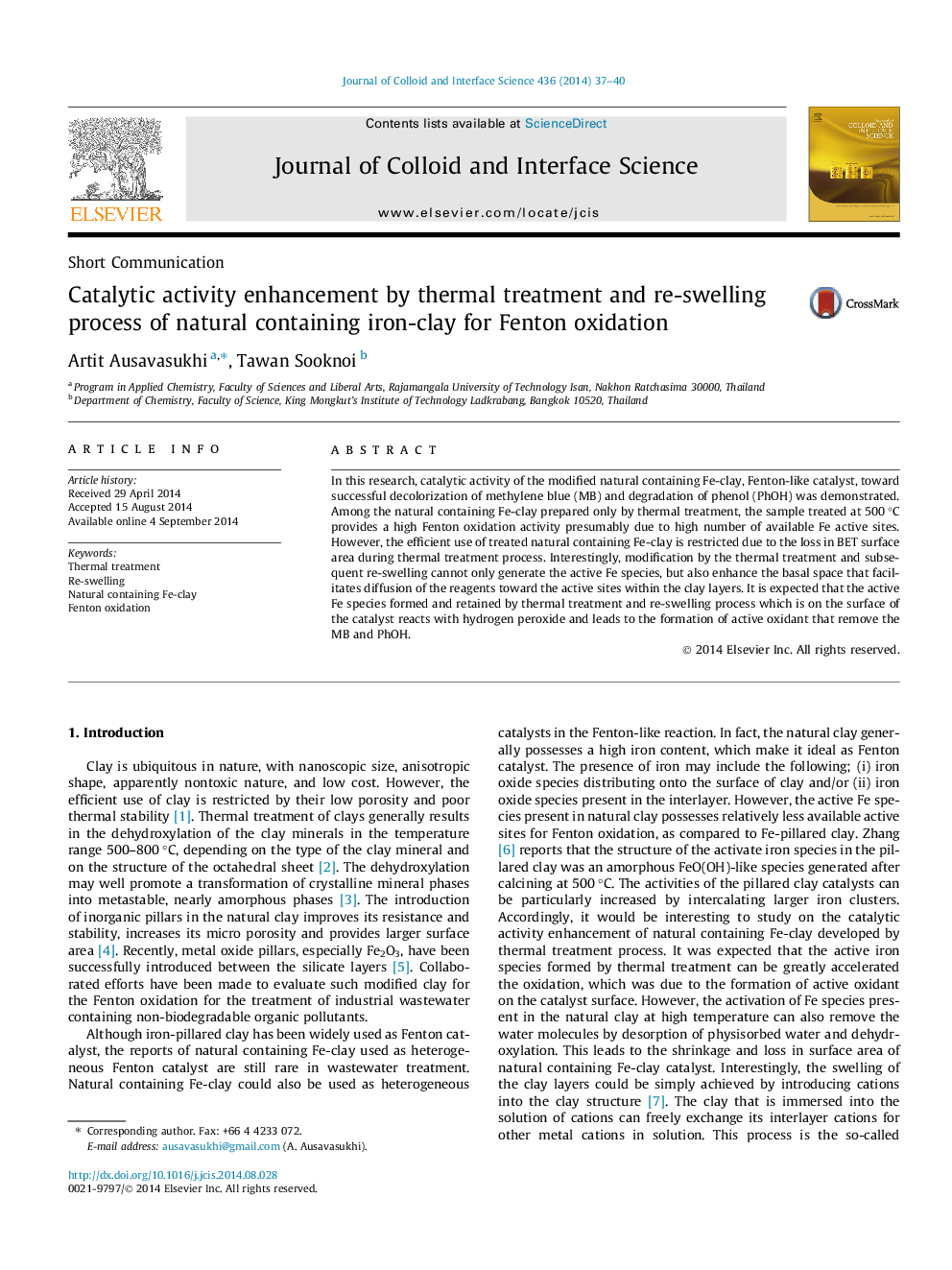| Article ID | Journal | Published Year | Pages | File Type |
|---|---|---|---|---|
| 606936 | Journal of Colloid and Interface Science | 2014 | 4 Pages |
•Thermal treatment generates the active oxidizing Fe species by dehydroxylation.•Treated Fe-clay loses surface area, yet provides a high oxidation of MB and PhOH.•Re-swelling regains surface area of the treated Fe-clay and enhances the activity.
In this research, catalytic activity of the modified natural containing Fe-clay, Fenton-like catalyst, toward successful decolorization of methylene blue (MB) and degradation of phenol (PhOH) was demonstrated. Among the natural containing Fe-clay prepared only by thermal treatment, the sample treated at 500 °C provides a high Fenton oxidation activity presumably due to high number of available Fe active sites. However, the efficient use of treated natural containing Fe-clay is restricted due to the loss in BET surface area during thermal treatment process. Interestingly, modification by the thermal treatment and subsequent re-swelling cannot only generate the active Fe species, but also enhance the basal space that facilitates diffusion of the reagents toward the active sites within the clay layers. It is expected that the active Fe species formed and retained by thermal treatment and re-swelling process which is on the surface of the catalyst reacts with hydrogen peroxide and leads to the formation of active oxidant that remove the MB and PhOH.
Graphical abstractFigure optionsDownload full-size imageDownload high-quality image (67 K)Download as PowerPoint slide
